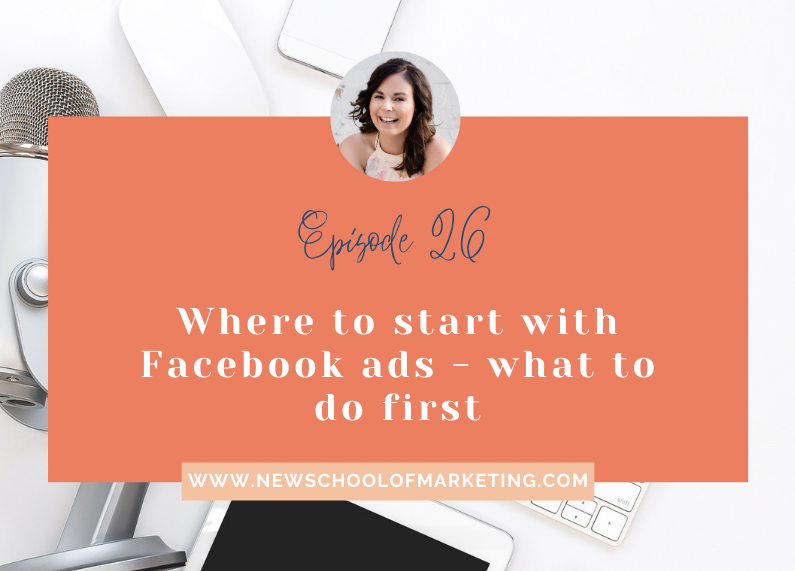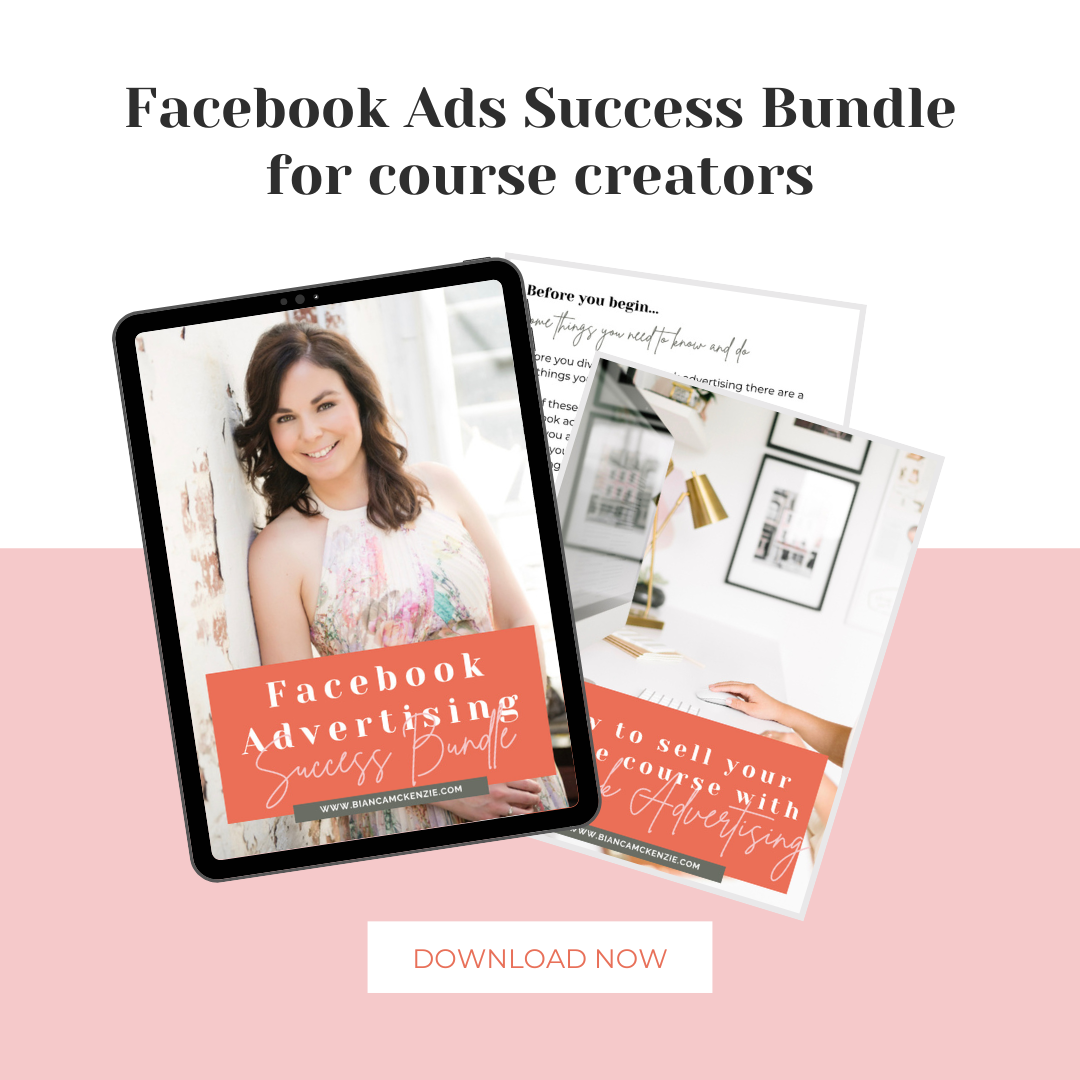
Facebook advertising can be a little daunting when you don’t know where to start. There are a few things that you need to know before you dive in.
In this episode I talk about where to start with Facebook ads and what you need to do first.
The resources mentioned in this episode are:
How to check if your pixel is installed
Connect with me
Website: www.newschoolofmarketing.com
Facebook: @newschoolofmarketing
Facebook group: @newschoolofmarketing
Instagram: @bianca_mckenzie
Love the New School of Marketing Podcast?
Let’s be honest and upfront, because you know that’s what I’m all about. Podcast reviews are super important to iTunes and the more reviews we receive the more likely iTunes will reward us with better reach.
I want to reach more course creators, store owners and awesome business builders that can add extreme value to our awesome insiders. I already love that you’re here and ready to rock your business, but I’d be extremely grateful if you would review me on iTunes and SUBSCRIBE!
Can’t wait to teach you everything I know about online marketing!
Facebook Ads Checklist
Inside this FREE master template I’ll show you exactly what you need to create and setup before you can start your ads.
Transcript
Welcome back to the New School of Marketing podcast. I hope you’re well and if you’re in Australia, I hope you’re staying cool.
We’re experiencing some super hot days here in Melbourne and hibernating inside the house seems like a great option.
We recently went on a road trip to check out a potential holiday property and there was a river nearby that we gladly took a dip in after being in the car for several hours. Now I wish we lived closer to a river so that we could go for a swim more often. We’re not really beach people because my husband gets sunburnt really quickly, but most rivers have a lot of shade from trees so my heart is now set on finding a property near a river.
Anyway, enough about my dreams.
Today I want to talk to you about getting started with Facebook ads and what you need to do first.
Let’s dive in.
1) Set a goal
As with any marketing activity, you need to set a goal.
Blindly diving into Facebook ads is going to disappoint you and you’ll most likely be wasting your time and money.
Before you spend your money, you need to be clear on what you’re training to achieve with your ads and more importantly what strategy you are going to use to get to your ultimate goal.
Your ultimate goal might be to make sales, but the road to get there isn’t always as straightforward.
For example, your audience may need a bit more time and nurturing before they purchase from you, which is often the case for online courses with a price point over $100, so you may need to come up with a strategy that is built on bringing people into your area of expertise and nurture them before you present them with your offer.
Or if you sell a physical product that has a price point above $100-$150 and it takes people longer to decide before handing over their money, you probably need to build in some trust building ads into your strategy.
So, before you get started with Facebook and Instagram ads, you need to determine what your goal is.
2) Know your audience
Another part that’s always important for marketing, is to know your audience.
You have probably heard many marketers talk about knowing your audience and ideal client, and it’s because it’s really important.
I honestly can’t stress enough how important it is to know your audience, especially when you are going to invest money into getting in front of them. You need to know who they are, or how else can you get seen by the right people?
If you don’t know your ideal audience and you set up your targeting options incorrectly, you’ll be spending a lot more money and won’t be getting the results you are hoping to see.
Knowing your audience means that you’ll be able to set up your targeting more accurately as well as be able to write copy that speaks to your ideal audience. Both of these increase your likelihood of getting great results.
3) Set up your pixel
If you haven’t already done this, you’ll want to do this first. Set up your Facebook pixel so that you can track the ads that you’re running.
The Facebook pixel is a snippet of code that you place on your website so that it communicates back to Facebook. It gives information about page visitors and you can use this data in your advertising.
I have an entire blog series about the Facebook pixel which I’ll link to in the show notes.
On top of installing your pixel to track certain movements, you can start using it to retarget people who haven’t taken a certain action. For example, you can show your cart open ads to those who have visited the sales page but haven’t purchased.
Retargeting ads are extremely effective in converting people to purchase and it should be part of any strategy.
Inside your Facebook ads dashboard you have the option to set up custom reporting. When you set up your custom Facebook ads reports you can see exactly how many people took the action you wanted them to take, and sometimes you can see even more information.
At the time of this recording the pixel is still relevant but there are some changes on the horizon with Apple’s implementation of iOS14, which gives Apple users the option to opt-out of tracking. This means that anyone with an Apple device such as an iPhone or iPad has the option to not have their app movements tracked and this will present challenges to tracking with the Facebook pixel.
There are some steps you can take to get as much information back to Facebook as possible. Check the instructions Facebook is giving out at the moment. I’ll link to them in the show notes.
4) Conversion rate
This next point might be controversial, but let me explain before you switch off.
Before investing any money into ads, you need to know what your conversion rate is.
This applies to both services, courses and online stores. Without your conversion rate it’s hard to predict what your results will be with Facebook ads.
Knowing your conversion rate will help you predict your Facebook ads budget and your return on investment.
Knowing every step of your client’s journey through your funnel is important and you need to measure each point so that you can fix any issues along the way and optimise your funnel for conversion.
Another important point to make is that a lot of people don’t know the average conversion rate for their industry. Familiarise yourself with the average conversion rates so that you aren’t disappointed and can fix what’s happening. For example, the average conversion rate for ecommerce is 2-4% and for online course sales it’s around 1-3%.
Knowing this will help you calculate how much traffic you need to send to your website and through your email funnels to be able to reach certain conversion benchmarks.
Now I want to add that knowing your conversion rate will really help you calculate your budget and predict your return on investment, I understand that this isn’t possible for everyone.
What if you have a new business that hasn’t had that many sales yet?
In this case you can still run Facebook ads but you need to make a mindset tweak.
Running Facebook ads for a brand new business is a marketing research exercise. So you’ll be getting valuable data that will help you make improvements to your online store or sales funnel.
Sometimes businesses get results straight away, but only if they’ve done their homework and have their messaging 100% dialed into their ideal audience.
If you’re new to Facebook ads and you have a new business or new funnel, your Facebook ads are a great way to get market research data.
So a quick recap of what you need to know and do first before diving into Facebook advertising:
1) Set your goal
2) Know your audience
3) Install your pixel
4) Know your conversion rate
Once you’re on top of these four, you can get more serious about Facebook ads and dip your toes in the advertising water.
So, hopefully you have a better understanding of what you need before you start and you can get your advertising journey underway.
That’s it for this week’s show, I can’t wait to connect again next week.


